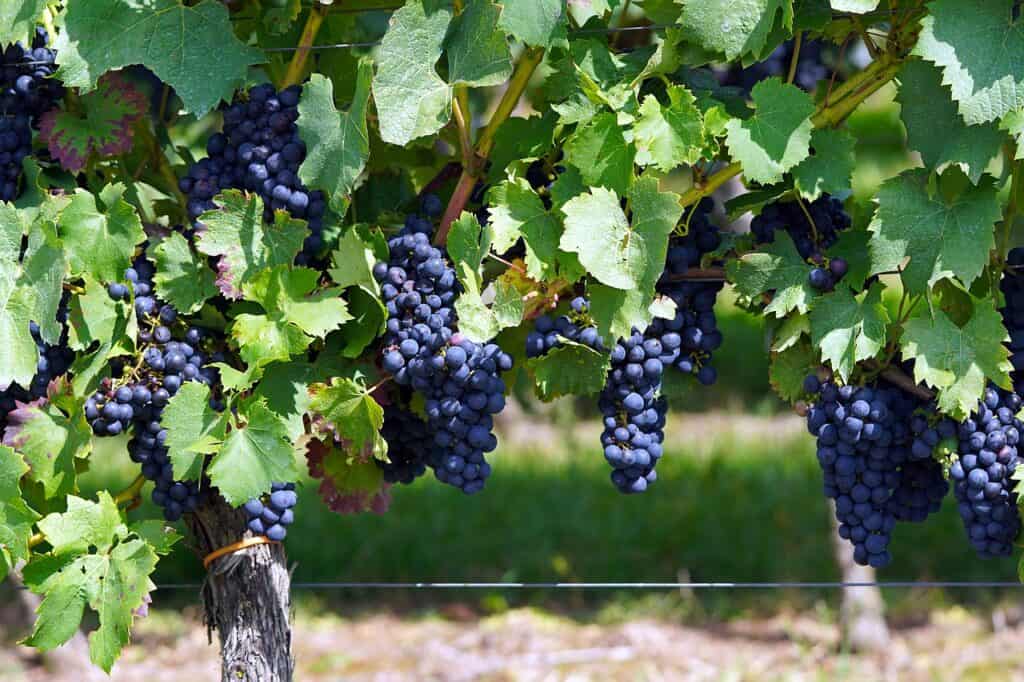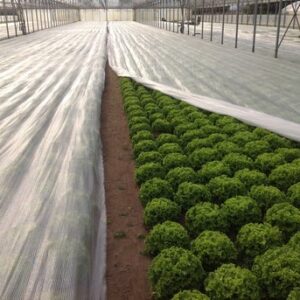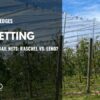The dream of growing a vineyard and tasting the fruit of your labor through the years is a wonderful one. Unfortunately, nature can sometimes work against you when growing grapes.
One thing that can be terrible for vineyards is frost. Frost not only kills your vines but it can also prevent a successful harvest. For instance, in 2021, France experienced a devastating frost that affected 80 percent of vineyards with estimated damages of around $2 billion.
Luckily there is a simple piece of netting on top of the vines that will do the trick. Here is how to deal with frost, to ensure maximum production.
What is a Frost?
Frost is the formation of ice that occurs when the temperature falls below 32 degrees Fahrenheit. The ice crystals that form naturally in the clouds affect the temperature around them in a negative way. When the temperature falls below freezing point, the water on a vine leaves freezes and produces what we call frost burn.

There are two types of frost:
- Air frosts: Air frosts are formed when the air temperature around your vineyard drops below freezing.
- Ground frosts: Ground frosts occur when the temperature of the ground falls below freezing without any regard for the air temperature.
In either case, these frosty conditions can damage your vines and ruin your entire vineyard if not properly managed.
How Does Frost Kill Your Vineyards?
Frost attacks grapevines by causing dehydration in the plant’s cells. During the process of dehydration, a grapevine can lose up to 80% of its water content.
If your vineyard is severely damaged by frost it will cause:
- Decreased photosynthetic activity
- Delayed ripening of grapes and eventually delayed wine harvest
- Increased raisin content of wine
- Dieback of the entire vine
- Vine to turns brown or yellow
- Wilting
- Freezing of the leaves, flowers, and young fruit.
Ways to Keep Frost Away in Your Vineyard
If your vineyard is susceptible to frosts or has a history of cold damage, you’ll want to take some preventative measures in the spring and winter. There are several defenses against it. Here’s how to keep your vineyard from frost:
1. Select the Right Location for Your Vineyard
First, select the right location for your vineyard. If possible you want to find a location that is facing south. This will help ensure that your plants receive the most sunlight each day as well as help them warm more quickly in the morning.
The worst frost occurs on nights that are clear and calm, with little wind or air circulation. That’s why you should choose an elevated site with good air circulation when you plant your vineyard. It doesn’t have to be on top of a mountain, but it should be high enough that cold air will flow down and away from the vineyard instead of settling in on warm nights after the sun goes down
Besides, you’ll want to avoid areas that have nearby bodies of water such as rivers and streams. These can cause colder temperatures. You also want to avoid areas that have low-lying damp areas that could cause frost pockets where cold air collects and doesn’t move around easily.
2. Use Vineyard Netting or Covering
One of the best ways to protect your vines from frost is to cover them with vineyard netting. This helps retain heat around the vines, keeping them warmer when the sun goes down. You can use vineyard bird protection nets, folded over the vines at a vulnerable time of the year. Better still use frost protection netting.
The frost cover is a knitted net made from UV stabilized thermal poly tapes used as fleece. the net material that is designed to hold in heat and prevent frost from forming on your vines. You will want to cover the vines with the covers as soon as temperatures begin to drop.
Make sure you drape the covers over your vines so that they do not get damaged by wind or rain. You may need to use stakes or other support structures to keep the cover in place.
You can purchase frost protection netting from many suppliers such as Eyouagro.
3. Plant Early-ripening Varieties
Some grapes ripen early in the season, and some wait until the fall to produce fruit. If you plant the late-ripening varieties in your vineyard, you could be at risk of losing an entire year’s crop if a frost hits while your vines are still producing fruit. However, if you choose a variety that ripens earlier in the season, you can avoid this risk.
To be safe, plant early-ripening varieties. In general, red varieties mature more slowly than white ones, so it’s best to stick with whites if you’re concerned about frost damage. In warm Mediterranean climates with no risk of frost, plant whatever varieties you like best.

Some examples of early-ripening varieties include Pinot Noir and Chardonnay. These grapes tend to be more susceptible to frost damage than late-ripening varietals like Cabernet Sauvignon and Syrah. But if you plant early ripening varieties, you’ll be harvesting before the frost hits and won’t have as much damage on your hands.
4. Use Frost Fans and Wind Machines
One method of frost protection that is commonly used in vineyards is the placement of wind machines. These machines are simply large fans.
These machines can be effective in keeping cold air moving over vines, especially in locations that have very cold air above them but warmer air just a few feet higher. Often, these machines use large fans mounted at the top of a tall tower that can push warmer air from above back down towards the vines. The continuous movement of warm air keeps ice from forming on the delicate buds and blossoms.
5. Using Water Sprays
The most common method of frost protection is to use water sprays to keep vine temperatures above 0°C (32°F). The effectiveness varies with wind conditions and temperature gradients. Air movement can be reduced by adding a substance that suspends the air and absorbs heat.
For example, many farmers use dry ice (solidified carbon dioxide) to keep air temperatures below the freezing point. It works, but it’s expensive because it’s heavy and it evaporates quickly at room temperature.
The option is spraying water on the vines, which causes frost to melt away, but this method only works if the temperature is above 28 degrees Fahrenheit.
Conclusion
If you want your vineyard to be successful, then you should take the necessary precautions. A vineyard is only as successful as its fruits and vegetables, after all. Netting may not seem like much, but do not underestimate its power in keeping the elements from affecting your vines.
You can take a bold step to care for your vineyard by protecting them from frost. Eyouagro is the largest supplier of frost and vineyard netting in the world. They have experience and produce innovative and customized netting for your needs. To know more about the options of the vineyard you can contact Eyouagro or send your request to info@eyouagro.com












